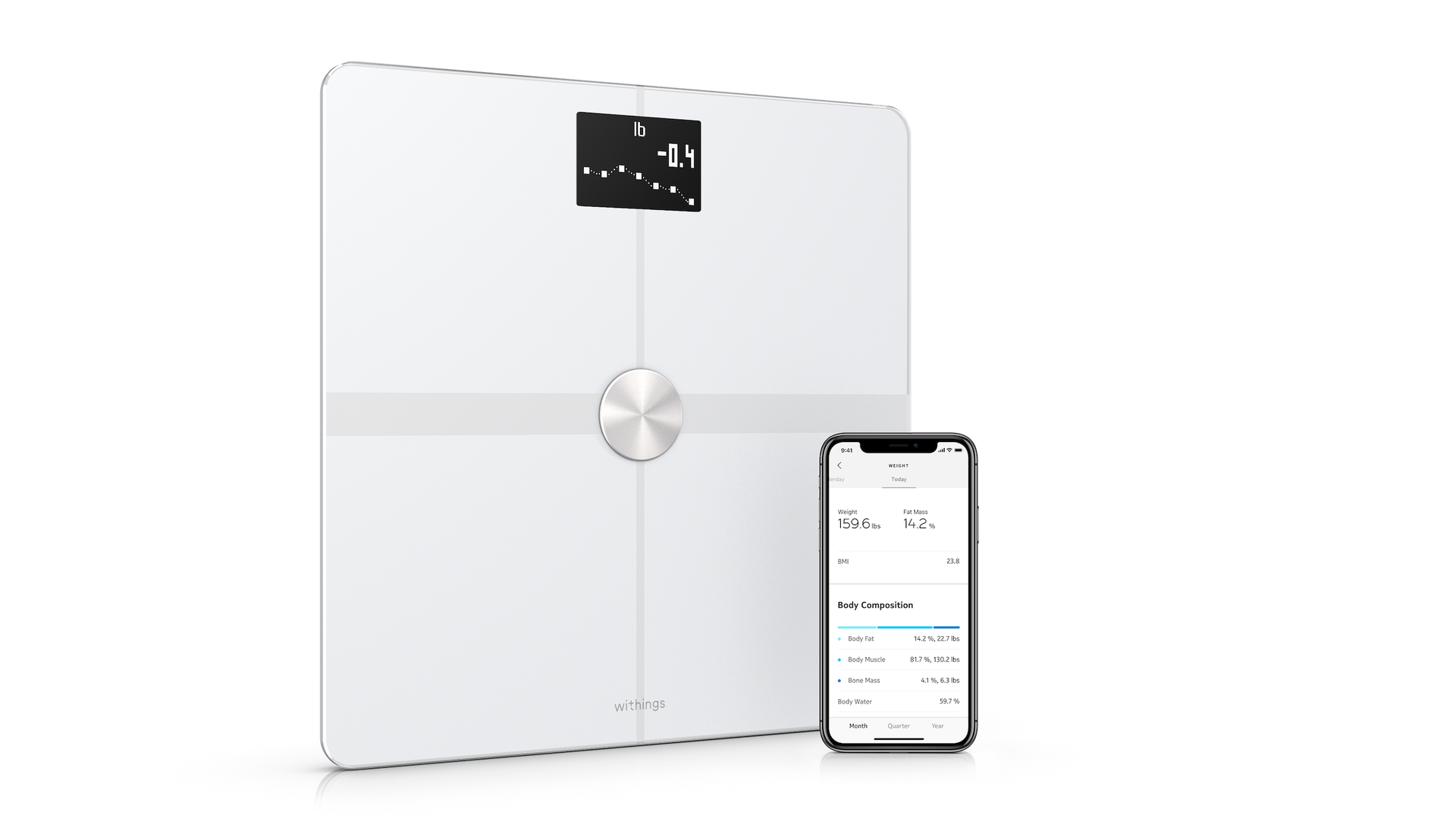What is Body Composition and Why Does it Matter?

Whether you’re training for races or heading to your regular gym class, the unforeseen and ever-changing circumstances across the country this year due to the global pandemic have left many of us feeling, well, a little out of sync.
But if you’ve been tempted to pull out that scale that’s been collecting dust in your bathroom cabinet as a way of “getting back on track,” hold on for just a second. Because that number on the bathroom scale? It’s not giving you the whole story. And when it comes to being your strongest and fittest, it’s not going to be much of a help.
That’s because a standard scale performs only one measurement—body weight. We usually associate this number with fat (or lack thereof), but in reality, it’s just the total of all parts: internal organs, bone, muscle, and skin. The distribution of those parts vary from person to person—that’s why two people of the same sex and body weight may look completely different.
To get a more detailed picture of health, experts turn to body composition—meaning a breakdown of that total body weight into the various elements contained within. “How we feel and perform, especially long-term, are ultimately more important than a number on a scale,” Wetter says. “Because active women can have more muscle, a body composition assessment can be a better indicator of health.”
So What Exactly is Body Composition?
Measuring body composition isn’t new—it’s been around for more than 150 years, when doctors first began to formally research how certain conditions affected organ size and mass. As measuring tools became more advanced, however, experts began to use body composition to measure the minute details of our body—everything from water retention to muscle development. This new technology allowed us to better understand that weight measurement isn’t so black-and-white as the numbers on the scale make it to be. Even body mass index (BMI), a screening tool which assigns a score based on a person’s height and weight, doesn’t really tell us much. A 2015 review of BMI found it to be a “rather poor indicator of percent of body fat,” leading doctors to move away from the measurement tool.
“Most assessments of healthy weight status, like BMI, are based on total body weight,” says Wetter. “In most people, BMI goes up with body fat. Measuring body composition splits apart total body weight into the different things the body contains, like fat, muscle, bone, and water.”
This is particularly important when assessing an active body. In running, performance varies with strength (which is largely determined by muscle mass) and weight. We’re often told that weighing more usually makes the activity harder—carrying 10 extra pounds of body mass for 26.2 miles will require a runner to work harder to run the same speed.
However, that’s an overly simplistic way of looking at things, explains Wetter: “Be mindful that lower body fat is not always better for health or performance. The body needs a certain amount of fat to function normally, typically about 5% in men and 8% in women.”
The key is to have a healthy ratio of fat to muscle. Body composition analysis measures the percentage of fat compared to fat-free mass (muscle, bone, and water) in your body.
How Do You Measure Body Composition?
The methods that are easily available are skinfold method and bioelectrical impedance analysis, or BIA. The skinfold method may bring back memories of the President’s Fitness Challenge in elementary school – someone pinches the skin in several places on the body (typically the thigh, arm, and abdomen). This method is based on the fact that body fat lies in 2 areas: under the skin and inside the abdomen.
“We cannot easily measure the fat inside our gut, but we can get a sense for how much is under the skin,” explains Wetter. “The sum of the skinfold measures is used to estimate total body fat.” When performed by a highly-trained technician, this method can have an error rate as low as 3%, which means a result of 20% body fat really means your body fat level is anywhere from 17-23%. When taking the do-it-yourself route, the error rate increases significantly, leading users to turn to more advanced technology. It also doesn’t allow for a detailed breakdown of other components, like water and bone mass.
BIA is the method that has been adapted for hand-held devices and scales. BIA works by running an electrical current through the body to estimate body water. Since body water is mostly in lean mass, BIA gives an estimate of lean mass; fat mass is then calculated. This method can have an error rate of around 4%, depending on device used. That’s why it’s so important to choose devices that are clinically tested for accuracy, like the Withings Body+ Body Composition Wi-Fi Scale.

Smart scales also have the added benefit of tracking body composition over time, allowing users to easily see how their results change in response to factors like training or the menstrual cycle. High-tech scales like the Withings Body+ can sync to apps and smart watches for an even more detailed picture of health, including heart rate, daily activity, sleep, and even pregnancy.
Get Your Big Picture
Though you can measure body composition as often as you want, it’s probably not necessary to do so more than once per week. When opting for more regular or even daily measurements, it’s important to remember that measurements can fluctuate from day to day (and even within a day), so instead look for gradual change over the long term: “If someone wants to know how their body composition might be changing in response to a new way of eating or exercising, think about assessing your changes over the long term, like every three months,” Wetter advises.
Wetter also says body composition, like weight, shouldn’t be the be-all, end all measurement of health: “For women, we used to think that reproductive and skeletal problems were the result of too-low body fat. More recent research shows that menstrual irregularities and the negative consequences on bone can occur in women at higher body fat levels and they result more from inadequate nutrition. Thus, from a practical standpoint, body fat doesn’t necessarily tell us more about our health than the things we can easily know, like regular periods.”
The more information a runner has about the state of her body, the more she can proceed confidently in the direction of her health and performance goals. That’s why measuring body composition, in conjunction with tracking your energy levels, sleep quality, and menstrual cycles, can give you a holistic picture of health.